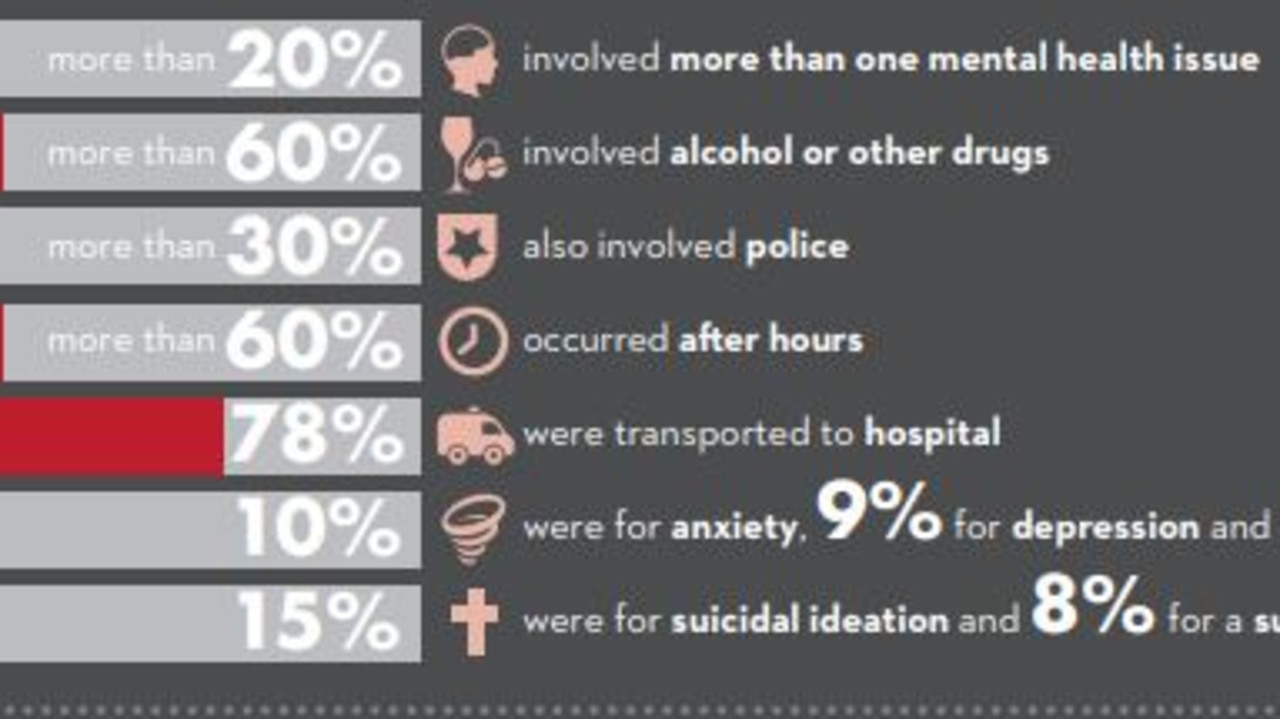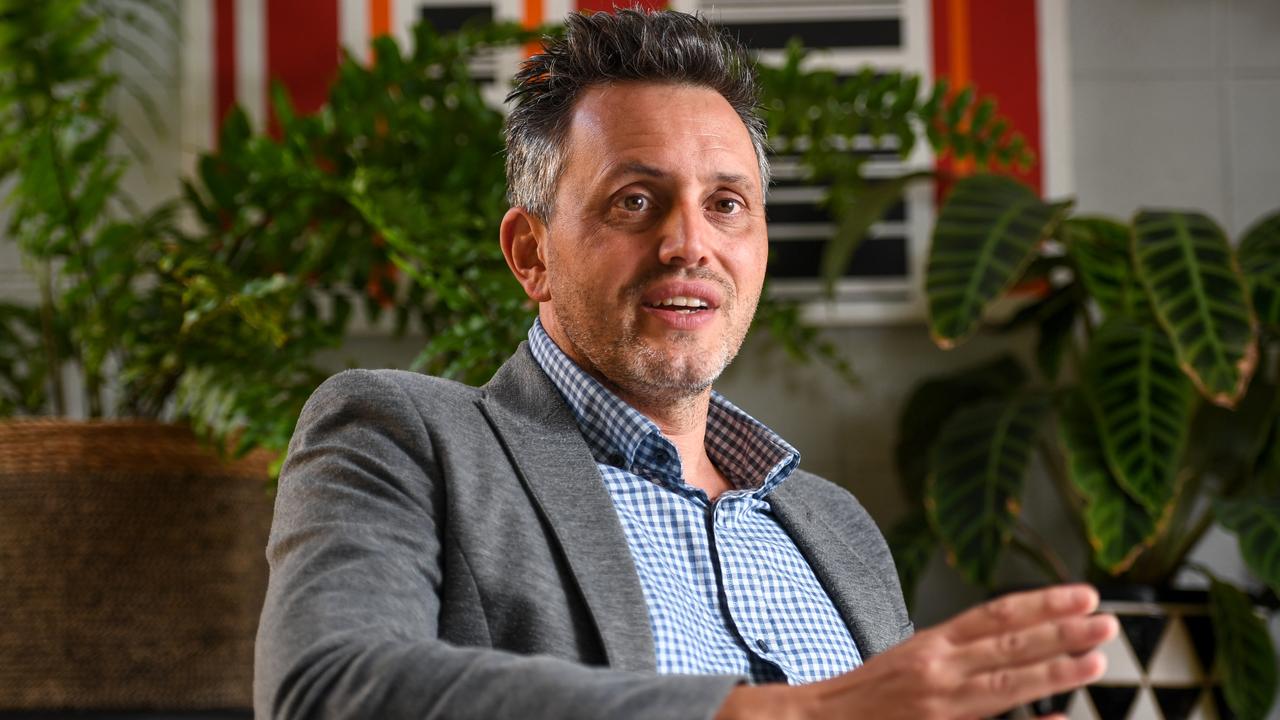Australia’s male suicide epidemic is much worse than previously thought, new research shows
Startling new research shows there’s a big problem in Australia. And it’s considerably worse than what experts previously thought.

Groundbreaking new research shows Australia’s male suicide epidemic is worse than previously thought, with at-risk behaviour among blokes up to three times higher than current estimates indicate.
Mental health organisation Beyond Blue has released a world-first study investigating ambulance call-outs to men experiencing acute mental health issues, self-harm and suicidal instances.
And it highlights an urgent need for hospital treatment reform with current practices proving inadequate, experts warn.

The study, titled Beyond the Emergency, found there were a staggering 30,197 ambulance attendances for men who had attempted suicide or had suicidal thoughts between June 2015 and July 2016.
But existing data, taken from hospital emergency department presentation statistics, identified about 10,000 cases in the same period because of the way patients were classified.
“This research tells us that suicide-related presentations to our health services by men triple when measured by ambulance data rather than hospital data alone. It tells us that what we know about male suicide is just the tip of the iceberg,” Beyond Blue chair Julia Gillard said.

The organisation’s chief executive Georgie Harman said there was a “revolving door” of admissions to emergency rooms when alternative treatment options could be more effective.
It’s a view shared by Monash University Professor Dun Lubman, who led the research, and said there’s an urgent need for better care.
“If they don’t have life-threatening injuries, they shouldn’t be at emergency departments yet paramedics feel they have too few alternatives,” Professor Lubman said.
“Our paramedics need more support and people with acute mental health issues or who feel suicidal need better models of care.”
Luke Richards represents the issues surrounding mental health emergencies, having experienced treatment failure in 2012 when he attempted to take his own life.
The 45-year-old was left on a stretcher in a hospital corridor for 14 hours until he was eventually seen by psychiatric staff and then released.
RELATED: The men’s mental health crisis Australia can no longer ignore — six male suicides a day

“It was the Labour Day long weekend and somewhere then I tried to take my own life and I was admitted to hospital for the first time,” Mr Richards told news.com.au
“These amazing paramedics came to get me. They were fantastic. They took me to hospital and that’s when the care ended. It was a completely different story.
“I felt like I was abandoned because what got me there was self-inflicted. They didn’t really care too much.”
He said no one checked on him during the time he was left alone. The first time a health worker spoke to him was the next day when he was taken for an MRI that was meant for someone else.
“Whoever was able to deal with me only came on duty at 10 o’clock the next morning,” Mr Richards said.
“They asked me about what had happened. By that time, I just wanted to get out and go home. I told them whatever I thought they needed to hear. That’s on me, granted. I lied. But they sent me on my way.
“I didn’t have my wallet, my phone was dead. They said goodbye and I wandered out to find my way home, still in shock about what I’d done.”
RELATED: Kai Eardley had everything to live for. He’s part of Australia’s big problem

Mr Richards doesn’t blame hospital staff or have any ill feelings towards them, saying the hospital is one of the busiest in the city.
“There could’ve been some really good reasons why it happened. I’m not angry or resentful about it. But it shows how much work needs to be done to care for people in this situation.”
Ms Harman said the new research shows the complex nature of mental health treatment and the challenges that confront paramedics.
“And it illustrates the urgent need for system reform. In particular, we must stop the revolving door of acute presentations to hospital emergency departments by valuing and investing more in community-based supports and alternative pathways to deal with immediate crisis.”
Suicide is the biggest killer of Australian adult men, with an average of six males taking their lives every day.
Investments in care and public awareness campaigns have failed to lower the startling statistic.
The research also found that only 14 per cent of ambulance staff had received adequate training for mental health patients, and two-thirds felt under prepared to respond to mental health needs.
It recommends better training for paramedics, sustained use of coded ambulance records to
identify and monitor community health needs, and a sweeping overhaul of the current service system.
RELATED: For Aussie men, help is a phone call away

After his experience, Mr Richards began a long road to recovery, entering rehabilitation for alcoholism and then later joining Alcoholics Anonymous.
“I hit rock bottom. I was ready to do what I needed to do to get sober. I was supported by doctors, my family, the AA community … it was a tough road back but I made it,” he said.
“I consider myself to be recovered.”
He met his now-wife and they have two young sons. Mr Richards works in online brand protection and has become an ultra-marathon swimmer.
He is a men’s mental health and addiction recovery advocate, and speaks about his experiences in a bid to raise awareness.
“I’m in a great place now,” he said.
In an emergency, call triple-0 immediately. If you or someone you know needs support, contact Lifeline on 13 11 14 or lifeline.org.au
For more information about the report and Beyond Blue’s work, visit their website




